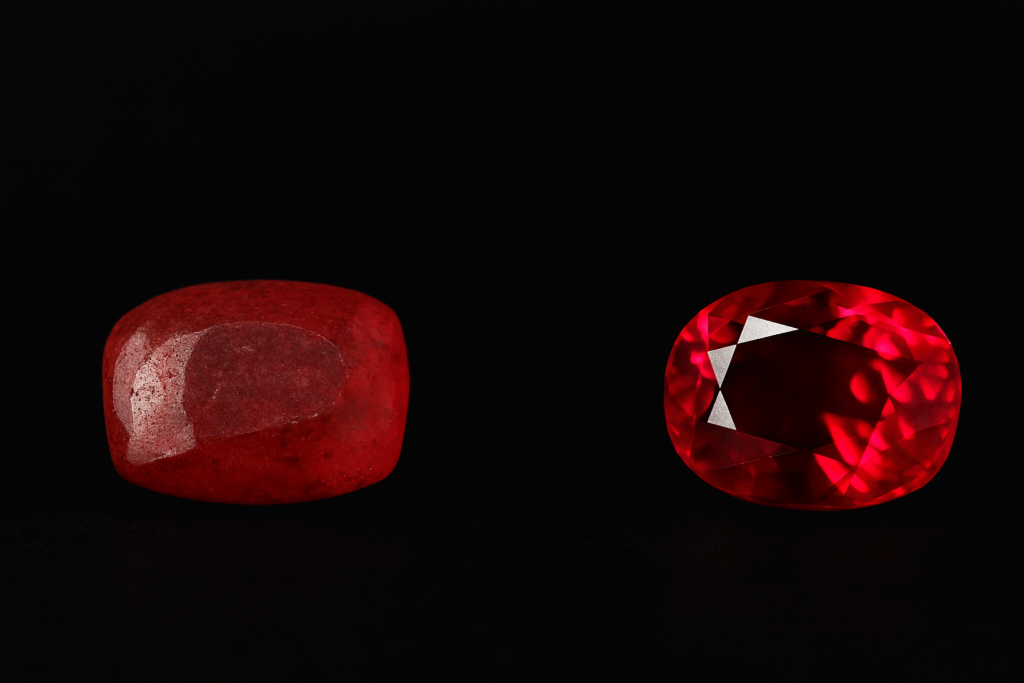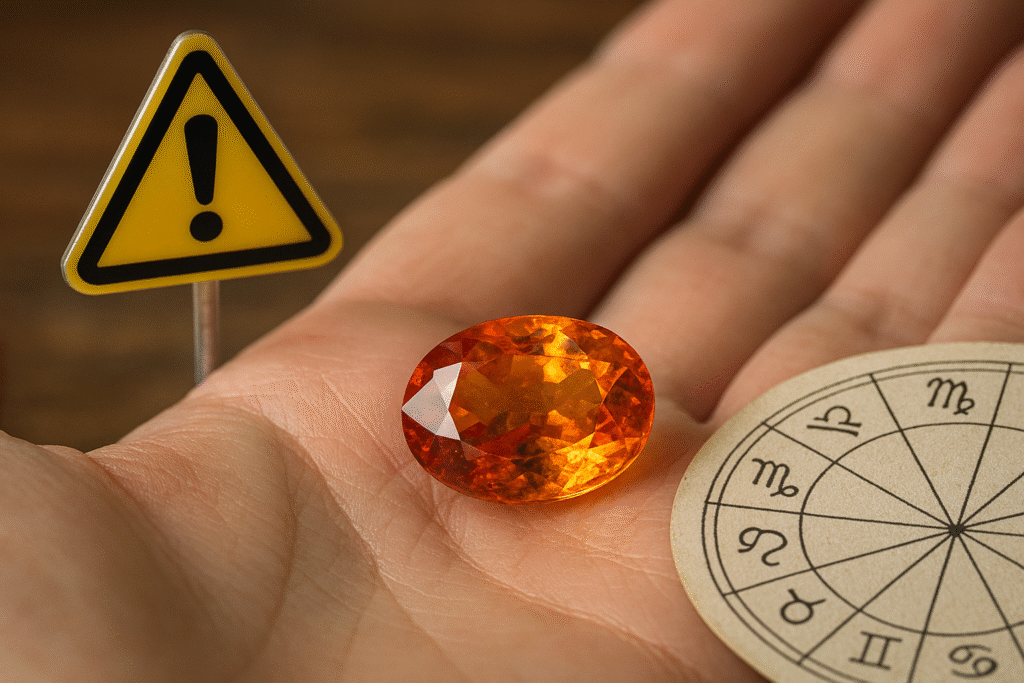When beginners buy sapphires, they often repeat the same sapphire cut mistake. They focus only on size or color while ignoring the cut. Yet, the cut is the soul of the stone because it controls brilliance.
A poor cut causes two common problems:
- Windows – light leaks out through see-through areas.
- Extinction – light gets trapped, creating dark patches.
Both issues make a sapphire look dull. Even a 5-carat stone loses life if the cut is wrong. By contrast, a smaller sapphire with ideal proportions shines brighter and carries more value.
“Brilliance depends on cut, not carat weight.”
Why Cut Defines Value
Case Study: Two Stones, Same Weight
For example, dealers compared two sapphires of equal weight.
- The first stone had a shallow cut, so it lost 40% of light through a window.
- The second stone had balanced proportions, therefore it returned almost 90% of light.
As a result, the well-cut gem sold faster and at a higher price. Buyers recognized the sparkle instantly.
What Buyers Prefer
Research confirms this. Surveys show that 62% of sapphire buyers prefer brilliance over carat weight. Because of this, cut remains the top factor driving real market value.
Expert Advice on Avoiding Mistakes
With over 40 years in the gemstone trade, I have seen many collectors regret their sapphire cut mistake. Once jewelers set a poorly cut stone, flaws in brilliance stand out clearly.
Don’t rely only on carat or color. Instead, always check how the stone reflects light before you pay for it.
👉 If you are learning, read Shopping for Gems: A Beginner’s Guide for practical tips.
FAQ: Sapphire Cut Mistakes
What is the biggest sapphire cut mistake?
Many buyers focus only on size or color. Because they ignore cut, even rare stones lose their brilliance.
What does a sapphire window mean?
A shallow cut creates a window where light leaks through. As a result, the stone appears flat and lifeless.
Can extinction be avoided?
Yes. A deep cut causes extinction, but if you choose proper angles, you can reduce the dark areas.
Can a poor cut be fixed?
A skilled cutter can improve brilliance. However, recutting reduces weight and increases cost, so weigh options carefully.
Where can I learn more about jewelry quality?
Read Understanding BIS Hallmark: What It Means for Your Jewellery to understand purity standards. Additionally, this article explains how to verify metal quality before purchase.
For more information about gemstone grading, visit the Gemological Institute of America (GIA), a trusted authority in the field.
Small Luxury Hotels FAQ
Introduction
This small luxury hotels FAQ answers common questions about boutique stays. It explains definitions, differences with large chains, and which services to expect. In addition, it covers family options, sustainability, and tips on finding the right property.
What defines a small luxury hotel?
- Fewer than 100 rooms.
- Personalized attention and privacy.
- Strong links to local design.
- Locations in unique urban or rural areas.
As a result, travelers often choose them for a more intimate experience. Moreover, their distinctive style sets them apart from standardized hotels.
Why choose a small luxury hotel?
Personal service
Staff remember guest details, therefore creating a sense of familiarity.
Calm spaces
Unlike large hotels, these properties feel quieter, so you can relax more easily.
Local culture
For example, menus highlight regional produce, and interiors reflect local crafts.
In addition, many guests return because the experience feels authentic.
How do small luxury hotels differ from large chains?
Guest experience
Small hotels provide tailored attention, while chains rely on uniform systems.
Property identity
Each boutique hotel has its own theme. On the other hand, large chains repeat formats worldwide.
Dining approach
Menus change seasonally and locally. Therefore, guests enjoy fresh variety instead of standard global menus.
Are small luxury hotels only for leisure stays?
Business features
- Lounges double as meeting rooms.
- Private dining options support work dinners.
Digital needs
- Fast Wi-Fi supports remote work.
- Quiet spaces help concentration.
Because of these advantages, small luxury hotels appeal to both business and leisure travelers.
What services can you expect?
- Concierge services for tours and dining.
- Fine dining menus with seasonal ingredients.
- Spa and wellness treatments.
- Added extras like minibars and welcome gifts.
Moreover, services shift depending on location. For example, a city hotel might offer cultural tours, while a rural retreat offers farm experiences.
Are small luxury hotels family-friendly?
Options for families
- Connecting rooms for parents and children.
- Child-friendly amenities such as menus or games.
Adults-only stays
- Some properties focus on privacy.
- Guests find peaceful, child-free environments.
Therefore, always check booking policies, because each hotel sets its own approach.
Do these hotels support sustainability?
Sourcing and dining
Farm-to-table meals reduce transport impact. In addition, guests enjoy fresher produce.
Environmental focus
Plastic use is restricted, while refillable bottles are encouraged. Smart energy systems reduce wastage.
Local involvement
Hotels support the community by hiring regionally. As a result, growth extends beyond the property.
How do you find the right small luxury hotel?
Define needs
Decide if food, spa, culture, or privacy is your top priority.
Check guest feedback
For example, repeat reviews about service often signal consistency.
Compare value
Packages may include meals, transfers, or early check-in. Therefore, higher prices can still deliver stronger value.
Are small luxury hotels worth the price?
Value of service
Guests pay for attention, comfort, and privacy. Moreover, experiences feel tailored and unique.
Extras add value
Some hotels include exclusive experiences or benefits. Finally, weigh these extras against nightly rates.
As a result, many travelers feel these hotels justify their price when quality matters most.



